Writing character relationships that make sense requires thinking about how relationships work. How and why do people interact in harmonious or confrontational ways? Here are 6 tips for creating connected characters whose relationships are convincing:
1: Draw inspiration for characters' relationships from real life
Writing great relationships between characters requires being observant about relationships in your own life and those of others. As an exercise, list your closest friends. Write next to each what they contribute to your life that few others do. Perhaps one friend brings an always-chipper, positive energy. Another is always down for 'real talk'.
The exercise above is a good way to remind yourself how distinctive people are. It reminds of the many different reasons why we gravitate to each other and form bonds.
If you're creating a character (for example, the cynical best friend of your main character), think of real-world examples of people who have similar traits. There may be some aspects you can borrow, such as:
- Body language and posture
- Political or world views
- Anything contradictory about the person (e.g. An outwardly cynical person may also have a hidden tenderness only few people see)
Character relationships in novels that show no tension can feel flat and one-dimensional. This isn't to say characters have to brawl every other chapter. Yet characters' flaws should sometimes create conflict as they often do in real life:
2: Give characters varied flaws that interact
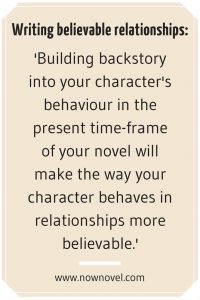
Everyone has flaws. What do we mean exactly by flaws? Character traits that impact themselves and/or others negatively. For example, a character who is overly critical of others could sabotage a close friendship without meaning to. The over-critical character's flaw could interact with a character whose flaw is needing to be loved by everyone.
Character flaws can be explained by backstory. A character who is slow to trust others romantically might have had a damaging previous romantic experience. Building backstory into your character's behaviour in the present time-frame of your novel will make the way your character behaves in relationships more believable.
Even characters who are similar should have traits that rub each other up the wrong way when a situation arises that throws their differences into relief. For example, in a fantasy adventure novel, the main party might share an important quest. At a time of great stress, such as meeting a seemingly impassable obstacle, characters' flaws might come out. The character with controlling tendencies might try persuade the party to take a course of action. Meanwhile, the character who sees everything from all angles (but is chronically indecisive) is certain the plan will fail. An argument ensues.
The above example shows that if you give each character distinctive traits, including flaws, pivotal scenes will become more interesting.
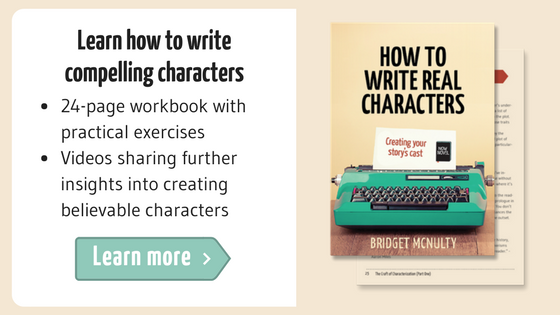
Just as the plot of your novel shows change and development, so should characters' relationships:
3: Make sure some character relationships ebb and change
Sometimes, relationships do proceed on a single track. In JK Rowling's Harry Potter, for example, it would make no narrative sense if the villain Lord Voldemort were to suddenly befriend Harry. It would be counter to the antagonist's goals and would also destroy the narrative tension Rowling sustains across all the books in her series.
While some relationships may be fairly fixed, primary, intimate relationships in a story need to ebb and change. Think of the '5 w's' - who, what, why, where and when - and how changes in any of these areas could produce change in your character relationships.
For example, when a new character enters your main character's life (a 'who' change), what impact will this have on their close friendships? Similarly, if the 'where' changes and your story moves to a new setting, how might this impact your characters' relationships? Say, for example, two romantic leads move to a new city. The pressure of being in a new place with a reduced support network could force them to rely on each other more and fault lines could show in their relationship as a result.
Think about cause and effect this way and make sure that any momentous change reverberates through your characters' primary relationships.
4: Avoid making characters instantly like each other
YA author Kasie West raises this crucial point in her blog post, '5 Ways to Build Solid Relationships in Your Story'. As West says, 'Resist having characters immediately like each other. Avoid phrases like: drawn to him, instant attraction, it felt like I had known her forever.'
The problem with characters instantly liking each other is that this skips the interesting elements of character introductions. You can create curiosity and narrative tension out of the fact each character is still somewhat unknown to the other.
It's entirely possible, of course, that two characters feel instant physical attraction. But building connection through multiple encounters makes this attraction, this story event, feel earned. In Jane Austen's Pride and Prejudice, Austen takes time to build the connection between Elizabeth Bennett and Mr Darcy. This creates curiosity in the reader and satisfying narrative tension.
5: Know more about your characters than you will use
Know your characters inside out. It's easier to create believable relationships when you have a three-dimensional understanding of each of your characters. This is why it is helpful to sketch character outlines. Note down essential facts about each character, even if many won't get mentioned in your story.
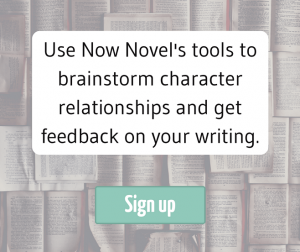
Knowing more about each character than you'll need in the final story will keep characters vivid in your mind's eye. This will translate to the page, especially when you describe character relationships and are able to bring in your characters' most crucial attributes and differences.
6: Find inspiration in the great relationships of literature

There are plenty of examples of believable, engrossing, non-static relationships in literature. If a specific type of character relationship is central to your story (such as a life-altering friendship or romance), find books where these feature and make a summary of the course of the relationship.
Take notes on characters' first interactions and their last. Take notes too on any disagreements in the course of the book and why they arise. How do the characters' personalities compliment each other? What types of differences create the biggest conflict?
In Emily Brontë's Victorian Gothic novel Wuthering Heights, for example, Brontë shows the complex conditions under which characters form and abandon relationships. The rough-mannered Heathcliff and Catherine Earnshaw grow close and fall in love after Heathcliff is found in the streets of Liverpool as a child and taken in by Catherine's father. Even though the two share a passionate love, Catherine is compelled to marry Edgar Linton instead, a man of higher social status than Heathcliff.
Books such as Brontë's show how character relationships take place in (and are influenced) by societal and/or familial structures. Taking notes on book's such as Brontë's that focus on human relationships will help you write better relationships yourself.
What's your favourite fictional relationship of all time? Tell us in the comments.

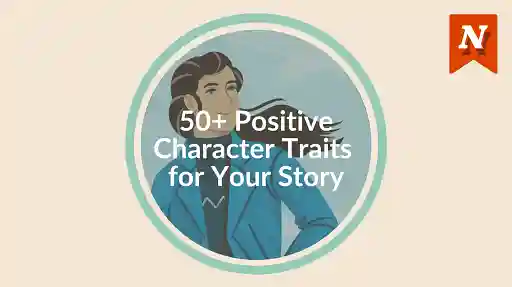
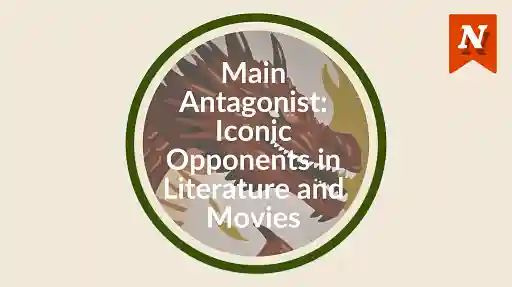
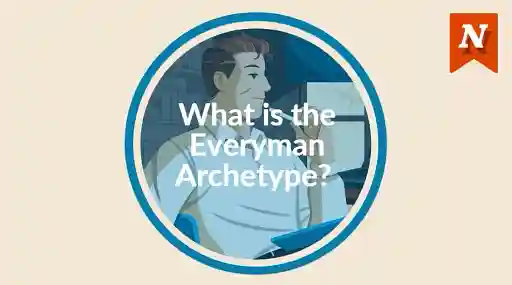
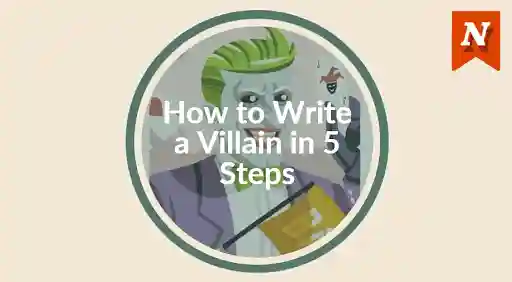
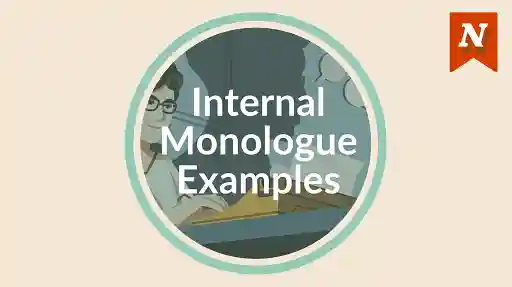
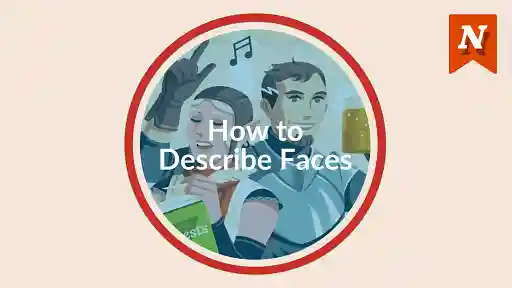



The whole "relationship" question is just as challenging in my writing as it is fun. I agree with your post about drawing from your own life, but I would also add that a lot of demonstrating a relationship is what goes unsaid. When we say, "John's sister walked into the room. He scowled and clenched his fists as he turned to look out the window," we don't actually have to say that John and his sister have a strained relationship. It's an art form that I think is important. You've demonstrated a lot of important things on the "relationship movement" in a story. Thanks for the post. Andy
Andrew Heath - Over 12 years ago
Hi Andy, Glad you enjoyed it. As you said its more about showing than telling. (your site is great btw, keep up the writing)
Brendanmc - Over 12 years ago
This post is so great. For me the most important thing in a story are relationships. In every kind of story, crime novels, fantasy novels, all of them, if the relationships don't work, the story fails. OMG I like the kind of relationships that start really bad and become really a companionship later when they start to know each other for real and act like if they were synchronized. Romantic relationships of this kind are especially fascinating for me, because even when they desire and love each other, they act like friends, the best friends in the world who finish each others' sentences and can guess is wrong with the other one. I love that. My favorite relationship of all time is one that started badly. BADLY. Darcy and Elizabeth. You mentioned it. I love it, because you can see the evolution their relationships makes, and how both of them get to be better people by doing it. Also, you can see how similar they are, Darcy and Elizabeth, so you can almost see how good their relationship will be afterwards, when they are married and have kids. They will be like best friends.
Kanes - About 9 years ago
Thank you, Kanes. You're right, Austen really teases out that growing connection and it makes the book all the more believable.
Bridget At Now Novel - About 9 years ago
What if the story involves a backstory where the they have known each other for years while a romantic relationship is developing in the story? How would I work that into the developing relationship?
Marissa - Over 8 years ago
Hi Marissa. I think that could potentially involve a lot of backstory, so the only danger would be the backstory overwhelming the present time of the narrative. Light Romance authors such as Nicholas Sparks handle this by making the backstory itself a reason for their not getting together. For example, characters separated by disapproving family members, wars or other circumstances. If the backstory itself is interesting, it will be easier to weave it naturally into the story. Hope this helps.
Bridget At Now Novel - Over 8 years ago
Really late reply, but I'm planning a young adult sci-fi story with a romance subplot between 2 characters who already know each other through middle school even though they are not friends. The romance subplot is very important in the story but how do I build the romance without making the pace too slow. I don't want them to immediately fall in love but his romantic relationship affects the main plot.
Marissa - About 8 years ago
I read this article again because I am struggling to create an organic romantic relationship in the story revision I am planning. After I realized that my main character's love interest has conflict that has nothing to do with the main conflict, I deleted it. Even though the 2 characters do not start off liking each other immediately I can't seem to think of any external conflict for the love interest that will affect the main conflict. It's a fantasy but I want the main plot to be the romance. The love interest affects the inner main character's conflict, but how do I create a romance that is organic and not have the characters like each other just because?
Marissa - Almost 8 years ago
Hi Marissa, great question. Start by thinking of events and experiences that cause people to get closer, that could organically lead to intimacy between them. For example, is there a traumatic or important event in your fantasy world that brings them together? Think about the uncertainties that people have about each other when they first meet. Based on each character's personality, what might each fear in the other? These fears might delay either character acting on physical, intellectual or emotional attraction. Sometimes, the obstacle between a romantic duo (that supplies the dramatic tension) is external in the form of a forbidden societal taboo or an authority figure (i.e. The common 'forbidden love' trope). I'd suggest submitting ideas or extracts in the members area on the site so you can get feedback from a range of perspectives.
Bridget At Now Novel - Almost 8 years ago
Thank you for your help. The Main Character is a Greek god and the love interest is a human. How can I create an event that brings them closer together when the god lives in Mt. Olympus? In my original draft there was an event that brought them together, but unfortunately I had to cut the event out because I want to change the theme of the story. I don’t know what to do. I have read books with mortal and immortal romance but I never thought I would struggle with it myself.
Marissa - Almost 8 years ago
Hey, I'm writing a novel series where two of the main characters were in a relationship before the events of the series. My question is how to introduce the relationship without doing a huge exposition dump.
Rose V - Almost 8 years ago
Hi Rose, interesting question! I'd say a great book to read for this is Marquez's 'Love in the Time of Cholera' - it involves an unfinished relationship rekindled after decades apart. What Marquez does is switch between the story's present time and the past, alternating between the two lovers as viewpoint characters. Alternating viewpoints and time frames this way lets you drip backstory out more gradually. I'd definitely recommend reading it (or some of it) for inspiration. Good luck!
Bridget At Now Novel - Almost 8 years ago
Thank you so much for writing that post, it's really helpful. I've been stuck on how to write a vitriolic couple that doesn't always involve around fighting or bickering. I think the term for it called the "slap slap kiss" and the "belligerent sexual tension". http://tvtropes.org/pmwiki/pmwiki.php/Main/SlapSlapKiss http://tvtropes.org/pmwiki/pmwiki.php/Main/BelligerentSexualTension
Gilda - Over 7 years ago
Thank you Gilda, I'm glad to hear that. TV Tropes is a very useful resource, some great reminders of story cliches that weaken effect.
Bridget At Now Novel - Over 7 years ago
this article is nice ...i liked it .I am having question to ask ... If I want to create a character main protagonist (who loves girl ) and in a relationship from 6 months. the flaw of the protagonist is he don't know how to show love towards her which makes disturbances in their relationship. here, protagonists lover expects his love towards should be exposed.(one more she proposes him at the starting which lead to their relationship)can you give me the suggestions and references if any. thank you.
Varma - Over 7 years ago
I suggest reading the book "The Five Love Languages" There are five major ways of showing love to others. Perhaps your main character is accustomed to one of those ways to a more extreme extent, and the girl in a similar fashion, but a different love language. So they'd both be showing love in the way THEY understand, but misunderstandings cause conflict between them that they can iron out over time as they learn each other's love language.
Sein - Over 7 years ago
I have a problem with writing an heterosexual relationship that doesn't just become the cliche "A man and a woman work together and then they fall in love because they are the protagonists". I try to come up scenarios, but they just end up the same way. Got any tips???
Kakmonstret 725 - Over 6 years ago
Hi there, Thank you for sharing this challenge. I would say to avoid it seeming like characters fall in love simply because they're protagonists, focus on situations that could bring them into closer contact where they learn attractive qualities of each other's personalities (or simply have time to notice how physically attractive each other is). For example, if they're coworkers the situation could be: - They bond in adversity (there are retrenchments going around at work or some other trial - such as a taskmaster boss - which they commiserate and bond over) - They have more contact due to a new assignment/situation (e.g. they're assigned to a key portfolio and have to spend long evenings alone together working). I hope these suggestions help! Good luck
Jordan At Now Novel - Over 6 years ago
I'm writing a story where the two main characters are both girls and are in a relationship with each other that's been established before the beginning of the story. A lot of the story will involve the two main characters overcoming hardships of the past that have shaped them as people. (For example: One was a victim of bullying and is recovering from PTSD while the other is recovering from a big childhood trauma.) Although the relationship is an important aspect of the plot, it's not the center of the story. Which will involves a lot of history that needs to be revealed as the characters learn and grow. Is there anyway to do this smoothly without just giving my readers lots of homework? also, how do I establish at the very beginning that the characters have been dating for a while? Thank you in advance.
Lili Jordan - Over 5 years ago
Hi Lili, Thank you for sharing this challenge. It sounds an interesting story. I would suggest having the characters reveal some of this backstory to each other via dialogue. This would serve a dual purpose of revealing the nature/extent of the bullying and trauma while also giving them additional reasons to care about each other and root for each other. Another way to reveal this backstory is subtly through context. For example, perhaps the bullied character has social phobia and the other can't fully understand why they keep avoiding ordinary social situations such as parties. Think about the after-effects of each of their experiences and how these could perhaps be used to imply the backstory too. I would say to establish that they've been dating for some time you could show signs of their entanglement (e.g. having toothbrushes at each other's houses for sleepovers, other signs of deeper enmeshment than having just met). I hope this helps!
Jordan At Now Novel - Over 5 years ago
Thank you! This helps a lot. Do you have any advice on showing signs of entanglement? The two characters are both teenagers that live at home and are closeted. So they wouldn't keep toothbrushes at each other's places or anything that's similarly obvious.
Lili Jordan - Over 5 years ago
It's a pleasure Lili. It would depend on who would be seeing the signs. Toothbrushes at each other's places suggests to me you mean signs that, for example, parents might pick up on. If they're teenagers, one would be constantly messaging each other and on their phones. Maybe someone overhears them mentioning each other by name at some point, and (as you mentioned they're closeted), they'd quickly change the subject when they realise they've been overheard? Good luck!
Jordan At Now Novel - Over 5 years ago
Planning out a story that focuses on two characters. Let’s say A and B. A is an icy goth, B is a dorky mechanic and his highschool rival. A decided to pick up an old goth car simply because he found it pretty, and because it was old and half price, unaware that it would break down so often. Against his will, he calls up B knowing he’s talented enough to work on such an old model for such a low price. The two have matured since high school, and through the monthly fix ups they gradually get closer. They realize a lot of what they’d misunderstood about eachother in high school. Months and/or years pass and the two become a couple. I’m only struggling on how it becomes romantic. Any tips?
Anon - Almost 5 years ago
Hi Anonymous! I like what you've described so far, e.g. A having a somewhat impractical, romantic and aesthetic attitude towards the car, as this would fit with the romance of being a goth (the focus on aesthetic qualities and mood). The arc itself sounds plausible. For how it becomes romantic, some ideas: - Increasingly frequent proximity makes them discover more common interests and passions than their sub-cultural alignment might have made initially apparent (e.g. similar music tastes, similar past experiences, such as attending the same school, both being outsiders etc.) - Acts of kindness (for example, with B being a mechanic perhaps they give a part or time for free, or make some other kind gesture?) If you think about it, one of the components of attraction is reciprocity. What do they give each other? I hope this stirs up some ideas! Good luck, it sounds interesting.
Jordan - Almost 5 years ago
Hi this really helps, I've been writing a fantasy book about teenagers/ college students with powers. I have two characters, Hugo and Amber, they both like each other but have yet to express feelings to one another. Do you have any ideas as to how I can express there attractions without completely giving it away. (Like a little hint for the reader?)
Middle School Author - Over 4 years ago
Hi there, I'm glad to hear that this was helpful. Thank you for your question, too. You could hint this by having them seek out each other's company increasingly (for example, sitting next to each other in class, or even just looking for each other in various circumstances). Attraction has many telltale signs such as people mirroring each other's body language in subtle ways unconsciously, making longer or more intense than usual eye contact, signs of shyness and awkwardness (such as someone blushing when the person they're attracted to shows them attention or is mentioned). If someone is interested in another person they'll tend to flirt or ask more personal questions than when there is only a casual, friend/platonic interest. Hopefully this gives you some idea for how to show their building interest more subtly. Good luck!
Jordan - Over 4 years ago
Greetings! I am creating a story, which is mystery and romance. There are three protagonists, (Two boys and one girl (all teenagers)) and they are working to solve a series of murders which has been haunting the city for a long time. The first protagonist, who I will refer to as Protag, likes the female protagonist (Deuteragonist). The third protagonist (Tritagonist) likes Protag secretly. Protag is kind of cookie-cutter, being ambitious, brave, and courageous, though cowardly to a degree. Deuteragonist is Serious, Detail-Oriented, and a little too protective. Tritagonist is Smart, Stoic, and Envious. Anyways, I am having trouble with establishing the romance between Protag and the Deuteragonist. They both like each other, but havent told one another for a long time. Now that they are solving a mystery, they get to work together. An important detail to add, the murderer is anonymously sending threats to hurt the Protagonist's friends in the form of letters, and the Protagonist is scared. I can't write romance stories well, but I believe that I can write mystery stories well. I want the ending to not answer all of the questions, but be satisfying as well, when it comes to the relationship part of the story.
Cele - Over 4 years ago
Hi Cele, thank you for sharing this detailed question about the love triangle in your mystery story. I would say for establishing the romance, you already have a key step in your protagonist and deuteragonist spending more time together to solve the mystery. This is where you could begin to show their attraction further. There are many articles on websites like Pyschology Today that discuss interpersonal psychology such as theories of attraction and such. I'd recommend reading people's ideas on the stages of attachment and relationships for inspiration. This might help to provide ideas for incidents that will make your characters feel even closer and grow more attached, then making a list of potential scenes you could write that show this relationship building. Reddit is another great source of inspiration, as there are threads people post such as 'How did you meet your current spouse?' and so forth and all kinds of stories out there online that can provide inspiration for 'meet cutes', how people become romantically connected and more. Good luck!
Jordan - Over 4 years ago
Is it fine to spoil a relationship at the beginning of your book, like at chapter 1???
Anonymous - About 4 years ago
Hi Anon, I don't see why not (provided that there is some arc/movement to the relationship after that). Or a spoiled relationship could be the inciting incident that sends the main character down another path, with the person they have split with being merely the McGuffin that gets the story going. I seem to remember the series New Girl with Zoeey Deschanel had this premise - the premise for her character Jess moving in with a bunch of eccentric men as a roomie was that she'd just split with an awful boyfriend. I hope this helps!
Jordan - About 4 years ago
Hi! I’m writing a dystopian novel and currently having a lot of trouble with writing the romance between the two main characters. I want their relationship to feel real—not too heavy or depressing—but also appropriately demonstrating the trauma they’ve endured together. It’s hard to show how they relate to each other outside of their shared trauma…I’m not sure how to involve shared interests in a dystopian novel where modern day interests (i.e. tv shows, novels, music, etc…) wouldn’t be relevant. I’m also having trouble including humor (including in the romance) that’s appropriate to the novel’s heavier themes. Do you have any ideas for how to best develop that relationship?
Charlotte - Almost 4 years ago
Hi Charlotte, thanks for reading our blog and sharing your interesting challenge in your dystopian WIP. Have your characters lived through a crossover time where things went from OK to full-on dystopian? Then sharing memories may be one way to bring them closer, memories of the 'before' time. Then in stories of survival (which many dystopian stories are in part), bonding often happens over shared work having to do with this endurance, such as scavenging for materials for shelter and other tasks related to making the harsh conditions more comfortable/livable (this is a positive type of action that would provide something other than bonding over trauma). Within the narrowed scope of what's possible in dystopian conditions, what dreams might each of them have? Letting each other in on any private hopes or aspirations is another positive bonding opportunity. I hope this helps! Good luck with your story.
Jordan - Almost 4 years ago
Favorite relationships in literature? Anne and Gilbert, Jane and Rochester, Betsy and Tacey!
A. Johnson - Over 2 years ago
Thank you for sharing your favorite literary relationships, A. Jane and Rochester is a fascinating one - the final scene in the adaptation with Mia Wasikowska and Michael Fassbender is haunting. I'd never heard of the Betsy-Tacy books (I think you're referring to the series by Maud Hart Lovelace?) before. Thank you for the new discovery.
Jordan - Over 2 years ago